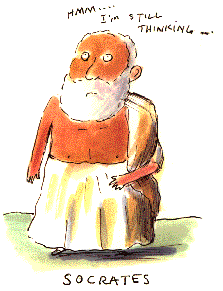 Being an old person, my formative years were in a quite different publication ecosystem. Although I studied at a world class elite school, the new publish or perish system had not yet reached our mathematics department. It was believed that a mathematics professor has about one breakthrough idea every two years and hence it was expected he or she submits a paper to the journal every two years and that the paper will be published after a substantive review and revision.
Being an old person, my formative years were in a quite different publication ecosystem. Although I studied at a world class elite school, the new publish or perish system had not yet reached our mathematics department. It was believed that a mathematics professor has about one breakthrough idea every two years and hence it was expected he or she submits a paper to the journal every two years and that the paper will be published after a substantive review and revision.
For the students, the first two years were spent in the basic studies, while the third and fourth year were spent in specialization and learning how to perform research. We were doing the latter through seminars, where each student was assigned a fundamental paper to study and explain. The papers were difficult and required researching the literature; the result was a seminar presentation.
At the end, four months were spent in real research in the form of a diploma thesis, which was printed in half a dozen copies for the collaborators. When continuing with a doctorate, a conference presentation was made at the beginning, to make sure that one would not embark in research already done. At the end the dissertation was printed in about a hundred copies for library exchanges and for colleagues working in the field. The main result was also published in the form a technical report and sometimes as a paper.
Today, journals receive a large number of manuscripts at the seminar level. It appears that every master thesis is submitted for publication in a journal. Since the level of research has not changed, this means that journals are swamped with bad manuscripts. With bad I mean they do not present novel original research results and they convey everything the author has learned instead of being concise.
People may say that a given journal is first tier because it rejects 80% of the submitted manuscripts. Unfortunately the contrary is true — when a journal is first tier it gets swamped with 80% crap. You may argue, so what, the system works.
Actually, it works at a very high cost. Every manuscript still needs to be reviewed, and because reviewers are swamped, the reviews are getting less and less useful. This way the research process as a whole suffers because the feedback from peers is less conductive to improved quality. Also, even when the editorial process runs on a volunteer basis, a large staff is still required to get the manuscripts moving through the review process, increasing the price of journals.
One may be tempted of incriminating grant giving organizations, because they created the publish or perish system in the first place. However, these organizations work in the interest of society, and are interested more on impact and quality than dry artificial metrics. In my view, the responsible are the professors or research managers who are not diligent in screening what they allow for submission to a publication.
To finish on a positive note, I would like to share with you what I think was the best paper that crossed my desk in 2007. The paper appeared 1 August 2007 in Optical Engineering 46(08), and was written by Yael Termin, Gal A. Kaminka, Sarit Semo, and Ari Z. Zivotofsky. The title is Color stereoscopic images requiring only one color image and you can get it at this link.
This paper addresses the application and advancement of creating practical 3D stereoscopic visual scenes, and does so in a well-written fashion. Through the use of an antique stereo scope (from 1905) and a high tech Head Mounted Display (nVisor-SX HMD) the investigators show to 11-15 subjects paired stereoscopic images. These images are either both color, both gray scale, or a mix of one color and one gray scale. The results support the investigator's hypothesis that there is no significant difference between the percept of depth between the color/color images pairs and the mix image pairs. There is a slight decrease in the perception of color intensity but this seems to be negligible. The finding is novel and important to the field of optics and visual perception.
I hope you will read it and consider it a benchmark for your next manuscript submission.





No comments:
Post a Comment